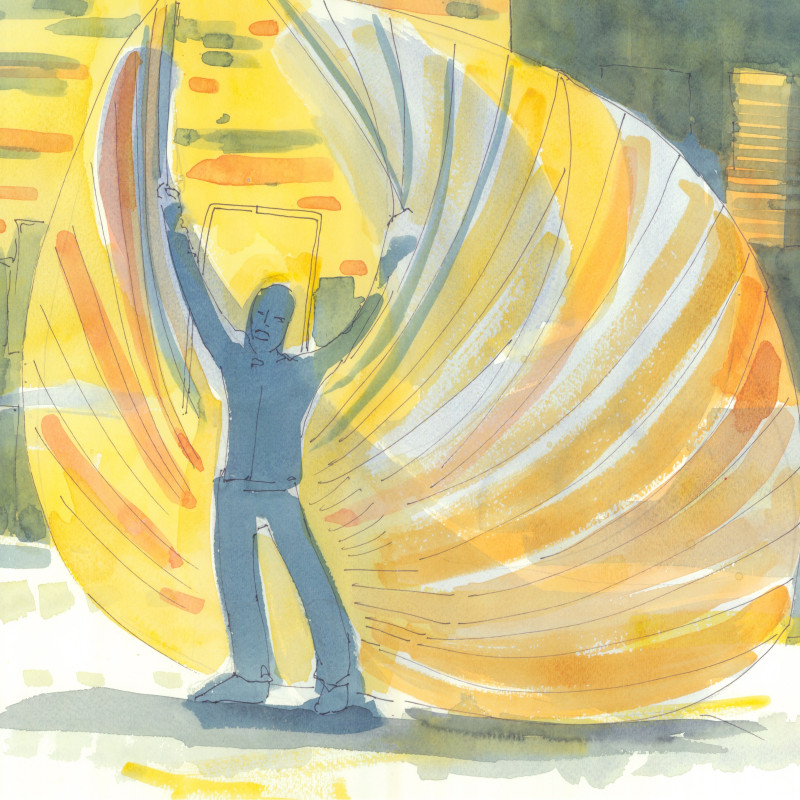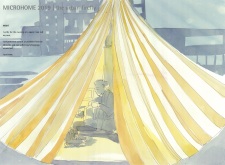5 key facts about this project
The MICROHOME 2019 project, titled "The Urban Firefly," is an innovative solution for addressing the needs of refugees and migrants living in uncertain conditions. It focuses on providing a portable and collapsible dwelling that can be easily transported. The design aims to offer essential shelter while emphasizing the importance of human dignity in challenging environments.
Design Concept
The concept centers around mobility and flexibility. The structure functions as a tent-like space that can be packed into a small form during the day and expanded at night into a secure shelter. This adaptability allows occupants to move freely and set up their living space wherever necessary. The design recognizes the challenges faced by transient populations and aims to create a sense of safety in every place the shelter is used.
Material Selection
Careful consideration is given to materials used in the MICROHOME. The framework consists of wires and rods that provide strength while keeping the overall weight low. This makes it easier for individuals to carry the shelter. The outer layer is made from lightweight, waterproof fabric, which is crucial for offering protection from various weather conditions. The project incorporates recycled materials, highlighting a commitment to sustainability and responsible design.
Visual Identity
Color plays an important role in the design. The use of bold and bright colors on the exterior is intentional. It enhances visibility in urban areas and helps occupants feel a sense of belonging. The lively colors counteract the everyday struggles faced by many displaced individuals and create a more welcoming atmosphere. This thoughtful choice helps humanize the experience of living in a temporary dwelling.
Contextual Relevance
The MICROHOME project is timely, as it responds to significant global issues like rising poverty, political challenges, and the impacts of climate change. By connecting architecture to these broader contexts, the design advocates for a more responsive approach to meeting the needs of marginalized communities. It encourages a rethinking of how built environments can support those facing displacement and insecurity.
The shelter's ability to adapt and provide safety in various locations helps its users navigate uncertain circumstances. With its portable design, it enables individuals to carry their homes with them, creating a small refuge wherever needed.





















































